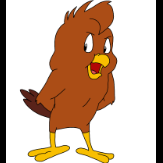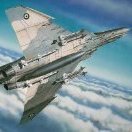Leaderboard
Popular Content
Showing content with the highest reputation on 08/11/2020 in all areas
-
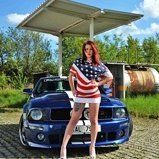
Ki-61 Ko, Matsumi Nakano, 5th Shinten Seiku-tai, 244th Sentai
Hartmann352 and 10 others reacted to Miloslav1956 for a topic
1/32 Hasegawa Wolfpack cockpit Aires exhaust All panting mask Dead Design All colours MRP IJA test set11 points -
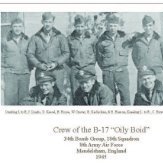
Liberated during quarantine -PB4Y-1
Trak-Tor and 8 others reacted to patricksparks for a topic
Finally got around to closing up the fuselage, hope I remembered to put everything in.... Did another dry fit with the main components, wings, tail planes, turrets. Still have to finish cleaning up the new lower nose and the ERCO turret, everything is fitting well though. I decided to do some markings on the vertical stabs, I am using Woodland Scenes 45 degree dry-transfers for the letters and numbers. I had to remember to set them parallel to the top of the fuselage, not squared up to the vertical stab. Still have to shade the rudders before I finish painting them.9 points -

HK Models Avro Lancaster Mk.I WIP: Canopy Attached 3/31/2021
KiwiZac and 8 others reacted to Dennis7423 for a topic
All- When I left you last, I was finishing up the forward turret. I have since completed the turret, and sealed the halves: 117122746_312562269983226_8167892514025512063_n by Dennis SAuter, on Flickr 117225214_749147109261129_5768932312431124410_n by Dennis SAuter, on Flickr 117597172_632388224374044_1691775739841017005_n by Dennis SAuter, on Flickr 117645106_607605849957330_6287595375774356453_n by Dennis SAuter, on Flickr A little smoothing out, and then some paint hopefully this weekend to round it out. Getting something on the kit "completed" helps the mojo! After finishing the turret, I turned my attention back to the forward nose, specifically the bombardier's station. I was humming and hawing about which bomb sight to use... the kit Mk.XIV, or scratch build a Mk.IX CSBS. As I studied photos more, I realized that I had already installed the computer for the Mk.XIV, so I went ahead and decided to use the kit part, with some alterations. I'm not sure it's accurate for Phantom at the point of the war I am modelling, but it's what I am going to go with: 116877587_2931106913662259_5240486897092291091_n by Dennis SAuter, on Flickr Another very, very weak part on the kit (and quite visible!) is the bomb sight mount. The kit part as supplied is a bit of a clunky beast: 117295036_285405739426375_5407417053890889489_n by Dennis SAuter, on Flickr 116909249_578262852838472_2922658167582022953_n by Dennis SAuter, on Flickr So, out came the saw, and the plastic rod, for something more accurate: 116839265_307034260732013_7966114306502428928_n by Dennis SAuter, on Flickr 116878754_220872905933860_8354700899743658530_n by Dennis SAuter, on Flickr Feeling much better about this guy than the kit part. It may not be completely accurate, but it's much, much better. While I was on a roll, I started tackling the bomb bay. I figured that I needed to get the majority of the bomb bay basics completed and installed before I started laying paint on the cockpit area, as I didn't want to handle the kit too much and ruin the paint in the cockpit. It was a good idea. For those wanting to tackle the Eduard set for the bomb bay, you must have a micro chisel in your arsenal. Without it, I never would have been able to accomplish the removal of ejector pins and the kit bomb mounting hardware. my Dad used to say, "He doesn't know whether to sh** or go blind." I know what he meant by that now. So tedious, but totally worth it: 117292318_1875523899256791_7985159970135171811_n by Dennis SAuter, on Flickr Now, I just have to build and install 16 different bomb carriers to install. Each one is about 10 pieces. Can't wait :-p While we're on the topic of bombs, I understand the Cookie in the kit is undersized. Does anyone make a proper sized one for a Lancaster Mk.I/Mk.III? I know of a resin one that is the larger Cookie, but it is intended for Lancasters with the bulged bomb bay. Or, does anyone make 1/32 SBC's (Small Bomb Canisters)? I would love to have those to hang inside. But, I am not aware of any. That's all for today folks! Hopefully next time, I can greet you with some paint getting laid down in the cockpit and bombardier's station. As always, comments and critiques are most welcome. - Dennis S. Thornton, CO USA9 points -
Work continues. I have 3D printed the canopy frames. These were rather thick so I printed another set at half the thickness. I plan to glue the vac canopy on top of the frame. Here is the painted backseat radar setup. And the phantom cowling, still some changes to be made. Laminations to thicken up the tail. Some details of the cockpits. Dan9 points
-
seems like nice addition to our scale - 3D printed and colored interior on decal paper hopefully they will produce more sets for 1/32 planes as stated in that post sorry if it was already mentioned here before https://www.facebook.com/groups/QuintaStudio/7 points
-
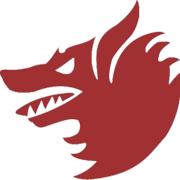
Colombia Kfir C10 Revell+Isracast
HerculesPA_2 and 6 others reacted to red Dog for a topic
1. The wings Panel lines seems to be correct so I used them as guide to engrave new ones before sanding the original ones. Once again, I gave the new tamiya tool a try but although this work great for straight lines, I can't find a good way to make curve with this tool. So I usually end up replacing the expensive tamiya engraving head with a needle. My first pass of engraving is usually messy and needs a lot of correction with superglue at later stages. Three main steps need to be performed to convert to a Kfir wing: - Adding the dogtooth, - Replacing the gear bay - Filling the Notch on the leading edge. The main gear bay is no real problem to install. Careful removing of the plastic on the underwing is all it takes to mate the sanded resin part. The part fits nicely and alignement Inside the fuselage was checked as well before gluing. That fuselage cut is a bit harder to make. Isracast calls for filling the airbrake probably to replaced them with decals, but I haven't done that yet and I am not sure I will. Installing the dogtooth, I failed to realise a problem with the Isracast offering which are too short when compared to the blueprints. Unfortunately I found out just after cutting the wing. I was tempted to leave it like that and glue it anyway but eventually decided to attempt to fix the issue by moving the dogtooth just a bit more forward. Not "too much" of a visible issue at the aileron level doing that so I cut the other wing accordingly. The light position (engraving) will need to be displaced further aft on the resin part but that's no big deal. After successfully trying on the other wing I corrected the first wing by replacing a small bit of the plastic wing at the rear of the dogtooth resin part. There is a small curve issue but if you don't compare it to the drawing, it remains invisible and will be further tamed down by sanding anyway. Finally the notch in the leading edge has been filled by plasticard and squadron putty. Off to some long sanding sessions….7 points -

F-14B Tomcat 'VF-102 Diamondbacks' - corrected Revell kit
F-4Phanwell and 6 others reacted to Starfighter for a topic
More progress - the fun part has begun. Quite a few coats of paint have been added, using liquid mask and mottling templates to create a busy surface. Contrast is low as I am trying not to overdo the effect; a first wash will follow soon which then again will be followed by more airbrushing.7 points -
Converting a Mirage III to a Kfir in 1/32 has been on my wish list for quite a long time. A few years ago I sourced one of the last conversion available from Isracast but unfortunately lacking the gear legs. I started collecting documentation about the IAF Kfirs and even got the new Mr paint special box for IAF paint and then I found a picture of a Colombia Kfir block 60 with a weird looking nose and 5th generation weaponry. The appeal of such an old aircraft design dating back to the seventies, so often updated and releasing Spices and GBU-49 was too hard to resist and I postponed (once again) the IAF Kfir The main kit will be the old revell mirage V. A century ago I sourced blue thunder for a few euros (before it was commonly seen for 50 euros) Pretty good model shapewise, not much detail but that's a non issue since all details will come from the resin conversion. Without surprise with these old kits, full engraving will be needed. The missing gear from the Isracast will be adressed with a Gear Factor Mirage III set but I still don't know how I will adress the fact that the Kfir had reinforced main landing gear. I thought the missing gear from Isracast would be no problem but back then I didn't know yet that the Kfir had reinforced gears… Decals for the colombian Kfir will be homemade and masks cut with a Silhouette Cameo 4 The Colombian Kfirs were bought circa 1989 from Israel's C2 surplus and upgraded to C7 at the sale. They were then further converted with the help of Israel industries toC12 standards. Another batch was bought from Israel's C7 surplus in 2007-2008 and these were bought to C10 standard at the sale. The C10 are therefore more Advanced than the C12 and are Link16 capable which the C12 are not. (unless a C10 send them the data) The model chosen here will be one of the late C10. Loadout will be made of the Spice from Isracast on centerline, the Raphael Litening pod on the chin pylon and a GBU-49 on the other chin, two Pythons on the outboard wing pylon and I will also probably scratchbuild the Derby AA ER missiles for the inner wing station. The end result should be Something like this: Documentation used will range from the Lela press bible about Mirage III in export variant warmly recommended by Thierry Laurent to the AJ-Press - Monografie lotnicze. #027. IAI Kfir that I will mostly used for the 3 view Drawings and an article in the Air Fan about Colombia Kfirs, and many references I accumulated about the Kfirs over the time. The main differences between the C2/C7 IAF kfirs and the COA C10 are: (feel free to add anything I might have missed) - The windscreen is one piece, I'll probably sand the revell part and polish it accordingly as I do not have the Tools to make a vac formed windscreen. - The tail needs two small horizontal surfaces on the top and a forward fairing for the jammer system (Elbit/Elisra SPS-45v6) - That same jammer system will slighly modify the rear end underside and the bottom of the nose fairing - The IP needs to be scratched with modern MFDs and ICP. Seat Wise, I thought the C10 had the Mk10 but it seems they retained the older Kfir C2 seat. - An air to air refuel probe needs to be added - GPS dome need to be added - Blade antenna forward of the nose gear bay need to be added - The C10 nose is different and sourcing the nose was the achille heel of this project. Luckily fellow modeller Cheetah came to the rescue months ago and kindly agreed to help with a cast of his own nose made for his outstanding cheetah. I can't thank you enough Nick. Without you I wouldn't be building this one. - Weapons will be sourced from ISracast (Spice), the Academy Sufa (Python and pods), GBU -49 probably from CMK GBU-12 and the Derby will be scratchbuilt I guess.6 points
-

The antique BoB Revell Spitfire Mk.I
Greg W and 5 others reacted to thierry laurent for a topic
Hi again, Alas, it took me more time than foreseen to build the battery, its support and modify the kit to be able to locate it. First, the bump over the three holes in the lower side of the bulkhead must be removed as it looks the Mk.I had not such a bump (at least when the battery was relocated there) and this prevented adding correctly the support. Here's the standard part: And here it is after the modification. It is useless to say this would have been far easier and less time consuming to do that before assembling everything with CA glue! I did not worry too much regarding the finish as the battery and the support fortunately hide that area of the bulkhead edge. Fortunately, the flare launching tube was not firmly glued. Removing it gave me a little bit more room to use my jeweller's files. And here's the battery and support combination: Everthing was made out of plastic card and strips except the fixings. I made them out of my favorite Albion microtubes and photoetched washers. finally I should not have added the washers as they are too small and virtually invisible! The battery and its support were painted actually flat black. On some planes, the fuselage area around them was also painted black. I'm wondering if it was done to detect leaking...? It is useless saying that washes and drybrushing on the edges will be required to see a little part of such details. Nonetheless, as that fuselage area was painted light green, the absence of such a black element is visible. The following picture shows the parts in their final location: I had a lot of fun building such details but succeeding in locating the support correctly was quite frustating and asked for a lot of dry fitting attempts and modifications of the support arms! The final details to recreate will be quite trivial in comparison with that assembly.6 points -
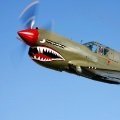
Finished! HPH Mig-15 Korean War
Daniel Leduc and 5 others reacted to Padubon for a topic
Thank you gentle for the comments. I just finished painting the Red 03 On the Mig and I am happy with it. What do you think?6 points -
.thumb.png.84c5d3a464f2dd83f0ac37a5aac81ec8.png)
1/32 Bf 109E Adolf Galland
Paulpk and 4 others reacted to Antonio Argudo for a topic
time for the wheel wells canvas, Dragon kit supplies a very good flexible plastic canvas but I used them in other kit so I had to use Magic Sculpt and sculpt them, will let it dry and add some more details later, cheers5 points -
https://www.youtube.com/watch?v=a4jyzjPpUXE&feature=emb_title First unboxing video of the Meng Dr.I...5 points
-
Thanks the PE is Eduard, purchased from Hannants still some in stock there by the look of it. Shiny new Jumo Engines installed and seams being dealt with. thanks for looking5 points
-
Completed today and hung up in the back of my display case. Overall, a lot of fun to build. I really didn't run into many issues along the way. I did take some shortcuts on the interior as I knew it wouldn't be visible in the end. I added some waist/belly windows and also eliminated the ball turret and instead added a tunnel gun. Hope you enjoy!4 points
-
Hey guys, Just to clarify: the team joked not wanting a book nr. 13 in the series, so that's the reason why the Mirage is DH-012+. DH-012 is on the MiG-31. So: DH-011 - Harrier II DH-012 - MiG-31 DH-012+ - Mirage III DH-014 - Skyhawk. A big shipment of books was sent to our US distributor - Casemate - about 7 weeks ago, so they should have arrived by now, unless if they are blocked somewhere due to the virus. I really hope they can be in shops in the US and Canada soon! Michael, yes yes! The Recce version is in the book with plenty of close-up photos of the recce-nose (inside and out). Next to that, the complete recce nose of the Mirage 5 BR is included too. The Mirage 5 is special for us, which is why we are supporting the BD-09 project in Belgium. These guys have restored a two seat Mirage 5BD to static condition, but they need more funds in order to get it ready for taxiing. They have 3 engines, but the aircraft's hydraulics need to be replaced and that's expensive. Nic4 points
-
Meng/Wingnuts Tripe
Pup7309 and 3 others reacted to Dave Williams for a topic
I prefer that they have all the parts for the different versions in one box instead of having to buy separate boxings. However, it’s a bit irrelevant what WNW would have done because they’re gone, and this is what we have. I’m just glad the kit was still able to be released. Aside from the decal sheet, they show the options when they flip through the instruction pages near the end of the video. Speaking of the instructions, the WNW instructions will be what I miss the most.4 points -
RAF FG.1 XV571 WILD HARE Phantom Conversion
Azgaron and 3 others reacted to Anthony in NZ for a topic
As I said, this would be a bit of a warts n all build, so excuse I haven't sanded, primed and made it all look pretty, but the point of this is to help those with the conversion or doing their own conversion. Something wasn't right with the lower edge position of the Aux intake door and the panel's forward of it didn't seem the correct proportions. So I measured and scaled off pics (I needn't have made it so complicated) the panel line positions. Basically this panel line is at the wrong angle on the Tamiya kit (at the point the red line starts). What this does is make this line travel too steep down the fuselage and making the Aux Air door too low and the 2 square panels mid way too square and not rectangular as they should be. And without the red lines so you can see what I mean So I shimmed the lower edge to the door to make everything line up properly. And those 2 square panels in the middle will have their heights raised to line up too. Hope this helps those who are interested Cheers Anthony4 points -
The insulators are there too Kevin ...4 points
-
Hello Alex, For painting the engine the best I can do is repeat what I wrote in the A6M2 Tweak List. The engine colours described below come from a wartime TAIC metallurgical report on a captured Sakae 12. Each component in the report was listed as to what metal it was made of and then what finish was found on the artifact. Cylinder heads - black paint Cylinder barrels - black paint Rocker box covers - black paint Push rod housings - black paint with NMF fittings at each end Baffles between cylinders - black paint Intake manifold - black paint Crankcase - greenish-gray paint (the nose section is held in place by 14 NMF bolts) Blower case - gray paint Gear case - gray-green paint Gear oil pump housing - gray paint Fuel pump case - black paint Fuel pump support - gray-green paint Gun synchronizer housing - gray paint Ignition system conduit tubes - gray paint Ignition system cables - black leatherette covering Scott Negron has described the original gray paint on the USAF Museum Zero engine as virtually identical to a sample of RLM 76 or FS 6473. I believe the TAIC report of gray-green paint would be this colour. The reference to gray paint may also have been this shade which then faded to a gray or it may have been a gray colour to start. All of the paint colours were originally gloss but probably a semi-gloss finish would be better on a model. Below are two photos of a Sakae 21 from the NASM’s Gekko night fighter. Although not a Zero the engine is the same. The third photo is the Sakae 12 engine from the A6M2 recovered in Alaska in 1942. Note especially that many of the bolts on the engine have an unpainted NMF. Ryan4 points
-
1/32 MDC Hawker Typhoon Mk.Ib 245 Sqn Sharkmouth
Alex and 3 others reacted to monthebiff for a topic
Basic cockpit now assembled with much care as things need to be kept square and quite easy for things to ping straight apart again! And a quick test fit inside the fuselage Not much to be seen but will leave it like that while the glue fully cures. Regards Andy4 points -

1/32 Tamiya F-15E Strike Eagle
themongoose and 2 others reacted to Squizzy 78 for a topic
I've been needing a fresh start, so here it is, my F-15 E, with as much aftermarket gear as I could find! There's still a few things to get, but I have most of it, so I'm making a start. As you can see I've got the Eduard photo etch, an Avionix cockpit, some resin gear from GT resin, a set of sidewinders from Zactomodels, aim 120's still to come, decals from Speed Hunter Graphics and the exhausts from KA models. The exhausts are next level, expensive, but having got them, they'll be a must have for every F-15 I build from now on. They just need a good paint job, guess we'll see what I can do, please let me know if there's anything different about painting 3D printed pieces to resin pieces. The jet I'll be building is 89-0487 from the 335th Fighter squadron 4th Fighter wing, which was the first F-15 E to reach 10,000 flight hours and has a air to air kill of an Iraqi helicopter in Desert storm in 1991, but the markings on the jet are from 2012. Also I've used the resin intakes before, but I didn't really like them, so I ordered a spare sprue from the Tamiya supplier, and I've cut down the rear section of the intakes and made them seamless, in the same fashion as the resin ones, and I'll use the kit pieces for the front of the intake. I hope to have these done over the next week. I'm wanting to make this Eagle as detailed and accurate as possible, so if any experts on the jet see things I've done wrong, or poorly, (there will be a lot), please let me know. Thanks for looking!3 points -
2021 LSP Group Build Vote
Daniel Leduc and 2 others reacted to BradG for a topic
Hi All, Welcome to the vote for LSP's 2021 Group Build calendar. 4 builds will run once again, 6 months each with staggered starting times, the first kicking off in December. A couple of requests; please vote for 4 group builds maximum. Also if you do vote, please make every effort to participate in the builds you voted for. The poll will close at the end of September, giving everyone some time to prepare for December. The options are explained below in no particular order; Target for Today - Ground support interdiction and CAS aircraft. Conventional fighters pressed into the ground attack role are included. Asian Delights - any aircraft, any period from a country in Asia. Air Superiority - single seat fighter planes. LSP Zoo. Aircraft named after animals eg; Mustang, Lynx, Hornet etc. In Enemy Hands - aircraft in captured markings. Animal House - Aircraft with animal inspired art. This could be nose art, tiger meet, shark mouths, squadron insignia etc The Blue Box of Happiness - Revell LSP's....Revell kits not in their traditional blue box are included too. Glory - Fighter aces or other highly decorated/successful pilots. In the Navy - Naval aviation, could be ship or land based squadrons. All That Glitters - Colour schemes you would not consider camouflaged. Hi viz CAG aircraft, ceremonial or commemorative schemes, lozenge, formation ships etc.3 points -
A F-8 with wing up, folded and flaps down: Jari3 points
-
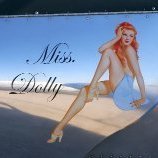
Meng/Wingnuts Tripe
scvrobeson and 2 others reacted to LSP_Ron for a topic
It looks pretty good. I agree it does seem like some form of hybrid between something started by WnW and finished by Meng. Those large sprue gates and plastic bits on the wing do no look like something that would ever come from WnW's but all the interior parts do look like their engineering. Also as pointed out earlier, having the elevators molded to the horz stab is highly unusual for a WnW kit. Overall it does look good though. Hate the music.... just sayin.3 points -
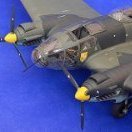
Messerschmitt Bf-109 G10 - Trumpeter 1/24th scale
Lud13 and 2 others reacted to tomprobert for a topic
The latest model off the bench is Trumpeter's 1/24th Bf-109 G-10. More or less out of the box, but I did add a couple of extras in the form of Eduard seatbelts and Barracuda wheels, and I opened up the armour plate behind the pilot (as the kit had it molded solid) and I added some clear acetate to replicate the armoured glass. Paints were my usual Xtracolor enamels, and it is my first ever attempt at mottling which I was pleased with. Best regards to all, Tom DSC_0055 by Thomas Probert, on Flickr DSC_0062 by Thomas Probert, on Flickr DSC_0065 by Thomas Probert, on Flickr DSC_0061 by Thomas Probert, on Flickr DSC_0058 by Thomas Probert, on Flickr DSC_0053 by Thomas Probert, on Flickr DSC_0048 by Thomas Probert, on Flickr DSC_0043 by Thomas Probert, on Flickr DSC_0040 by Thomas Probert, on Flickr DSC_0035 by Thomas Probert, on Flickr DSC_0034 by Thomas Probert, on Flickr DSC_0072 by Thomas Probert, on Flickr3 points -
3 points
-
2021 LSP Group Build Vote
BradG and 2 others reacted to Landrotten Highlander for a topic
as I understand it, any aircraft that falls withint the LSP definition as per this site?3 points -

Make the others jealous
scvrobeson and 2 others reacted to Iain for a topic
It looks really nice Mike. I *almost* bought one when Cameron and I visited the Bovington Tank Museum the other week - but I thought no, I don't build tanks... Then I ordered the Panzer 1 - go figure! But I also blame K2 with his 1:16 tank build - he's a bad influence! Iain3 points -
This might help Anthony...3 points
-
A F-4B but you can see the MER is in the aft position while the Phantom in the background has it in the fwd position: Also note Sparrows are loaded as well. Jari3 points
-
The front section of a F-8: Jari3 points
-

Zvezda Star Destroyer - a new detailing project
LSP_K2 and 2 others reacted to The Madhatter for a topic
maybe I should do this to another one: **Edit** I should mention that there is no way in hell I am going to do something like that. That's wayyy to much work even for me3 points -
Almost forgot to mention that it looks like the ignition lines on the NASM engine have been replaced by ones covered with braided aluminum. They would have been originally covered in black leatherette as can bee seen on the 1942 captured engine. Ryan3 points
-
Just when you though it was safe to open the post box, these appeared. Really can't understand how that happened: The following is an oddball one for me - but it appealed and should be a fun build (eventually!): And a visit to my friend Tim Perry (@wunwinglow) yesterday resulted in these test pieces for the Tornado F3 he's been working on. Please don't hassle him at this stage - I'm sure he'll shout when he's ready! These parts will be used as a test build that I'll put in a suitable thread, so you can give feedback there, perhaps... And he's kindly lent me his 'test mule' for reference (parts have changed as he's developed them): Tornado F3 is one of my favourite jets - and one I worked on when I was a Technical Author in the Flight Simulator world, so have wanted to build one for a loooong time... Have fun! Iain3 points
-
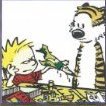
EA-6B Prowler (02 April: Done!)
Derek B and 2 others reacted to easixpedro for a topic
Quick update as I was on a roll... Finished shaping the hook. Not going to mount it just yet, as I work my way through the major construction. Not that I’m afraid of it breaking, rather it’s a large fairly pointy piece of metal and I don’t feel like stabbing myself with it! Here it is compared to the kit part. You’ll note mine is about a mm wider. Otherwise, it looks good and is very stout. I drilled through the hook fairing part, so it’ll slide in. You can see how I bent the rods so it’ll rest on the fuselage and abuts the bulkhead. I’ll cover it liberally with JB Weld on the top and bottom. It’s really about maximizing the contact points that will help support it. Frankly overbuilding is good. Here’s a side profile shot. Note how the hook actually extends further than the hook point. That’s what will get inserted into the wooden base and support the entire deal! and one last view. Note I filled in the holes Trumpeter has on both sides. Also filled in the little dial on the right side. It’s a gauge to check dashpot pressure—that’s what keeps the tailhook ‘down’ when it hits the steel deck. It was pressurized at 1,000 lbs to keep the hook from slapping back up and hitting the airplane. That’s it for now. I’ll concentrate on getting the horizontal stabs situated and the antennas on the tail. -Peter3 points -

Zvezda Star Destroyer - a new detailing project
Christoffer Lindelav and 2 others reacted to The Madhatter for a topic
Hello once again everyone. It's been few months since this was last updated and sorry to say, I haven't done as much as you might hope I had, but I have finished off the top section - well, mostly. I still have the SMD's to add for the trench spot lighting but in regards to detailing, that's all done So here is the top section shown as finished. I added some of the bits that sort of frame some of the lines to balance it out. You'll catch my drift if you look at the last picture in the previous update and look to the left of the ship and you can see some chips that run down the mid-section in a line toward the front. They have been replicated on the other side to make it right. That was a lot of explaining for something so trivial, so I shall move on and let the pics do the talking: Its pretty much the same on the other side. I might yet bulk some of the rear section out some more but I need to see how the side walls go on first. I do need to sort out that section at the very back of the ship - looking at these reminded me about it The bottom hull has also been started. I made the very foolish mistake of gluing the nose to the body in a hurry to install the hangar bay. This in hindsight was very silly. I has also located glue marks and other blemishes on there and I am not happy about it. I do not know when or how they got there but I also realised I forgot to grind down the old hangar surrounds and it has created a gap where there shouldn't be and now I have to fix and live with my decision to install when I did. Still, none of this is unfix-able and I will fix it as much as I can accordingly. I just wish I hadn't created this unnecessary work for myself is all Well, that's all I have for now, but I will be back again soon enough. As always, thanks for stopping in and having a look Si3 points -
It is easy to get sidetracked when researching the A6M2. It will inevitably lead the enthusiastic reader to Canada, which it did in my case. I didn't know that Mitsubishi's competitor Nakajima built Zero's, or that there were subtle (and obvious) ways of knowing the difference. One of those differences, the white surround to the Hinomaru, was one of the major features I wanted to incorporate in this build, since it highlights the dark shade of the grey with which the Zero was painted. Then I discovered the concept of the Houkoku presentation number, and that became number two on the wish list! How does this research end up in Canada you may ask? In 1968 an enterprising Canadian from Manitoba went in search of wreckage on Ballale Island in the Western Solomon Islands, and he hit the Nakajima built Houkoku A6M2 motherload. Three of them! They were chopped up (along with a Val), and carried out of the jungle by local labour, put onto boats and by the most amazing feat of horse trading ended up on Friendship Field in Carman, Manitoba. Their story is pretty complicated, but ends up in a collection of artefacts owned by the Blayd Corporation, also from Carman. A name that kept surfacing around these aircraft and research about them is Ryan Toews - another Canadian. Ryan's tweak list for building both of the Tamiya Zero's is a must read for anyone attempting these kits, and he has been a veritable gold mine of information for this project. You can see his contributions in the build thread, along with all the other information about the construction and painting that I won't rehash here. Since the tails of these aircraft were not attached to the wrecks, it is pure speculation at this stage to assign any identity other than the construction number. The aircraft is pictured soon after delivery to the island, having been assembled and test flown, awaiting the painting of unit identification. A final salute... Sean2 points
-
With the book on the Spanish Aircraft Carrier Juan Carlos I released this week, it is time to announce our next two books in the aircraft series! Release date is September 15 and these are two books we've been working on for quite some time! The first one is with reference DH-012+. This is a 116 page book on the Mirage III/5/50. This is the first of the famous French supersonic deltas, which remains operational to this date (nearly 70 years already!) with the Pakistan Air Force. This book is filled with details, action, cockpit, maintenance of the Mirage III. Photos are included of French, Swiss, Pakistan, Argentine, Brazilian and Spanish Mirage IIIs. A separate (extensive) chapter is included on the Mirage 5 (single-seat, two-seat and recce-version) from Belgium, France, Argentina, Pakistan and on the Mirage 50 from Venezuela! This book took us about 2,5 years to get ready. The second book to be released on September 15, with reference DH-014 is on the A-4 M/N/AR/AF-1 Skyhawk. Again, this book is 116 pages, with a really large chapter on the maintenance of the jet. A lot of photos were taken in Wittmund AB of the Top Aces Skyhawks, but many photos are included of Israeli, Argentine and Brazilian Skyhawks. A chapter is included of the AF-1 of the Brazilian Navy on board of the Sao Paulo aircraft carrier. There are some fantastic air-to-air photos in this one! Available from your favourite shop as of September 15 !! Nic2 points
-
Trumpeter's 1/32nd scale A4 E Skyhawk. I replaced the ejector seat with one from Quickboost, and I used an Eduard set to detail the cockpit. Rest is out of the box. Painted with Xtracolor enamels. Thanks for looking Angelo.2 points
-
Awesome I would like to know also what paint you used2 points
-
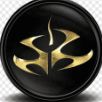
Quinta Studio - 3D printed interior for NEW P-51D, Su-25, F-16C
scvrobeson and one other reacted to vince14 for a topic
This may very well persuade me to get my Trumpeter Su-25 off the shelf - I've been thinking about doing it in Chad markings...2 points -
RAF FG.1 XV571 WILD HARE Phantom Conversion
Anthony in NZ and one other reacted to Cees Broere for a topic
Great work Anthony, And thanks for correctly positioning the aux. intake doors. In the meantime I have ripped apart my intake conversion as I felt the intakes ( modelled on Frank Mitchell’s build) were too wide and gave it a comical look. The intakes are widened again but by about 3mm which looks better compared to photo’s. Unfortunately the intake ramp parts were effectively destroyed and I will have to take my words back and will use FOD-covers. Although this will speed up the work and I can concentrate on the rear fuselage. Oh well. Cheers Cees2 points -

RAF FG.1 XV571 WILD HARE Phantom Conversion
Anthony in NZ and one other reacted to Starfighter for a topic
Can't wait to see this one come together, Anthony!2 points -
thanks for the info Bob, i dont think I'll be fixing any more issues with the kit to be honest. But at least you admit to the problem you have. haha The comments remind me of the old modeler saying "never give a finished model to someone who either flew it or worked on it" I did a similar thing with a Bushmaster Protected Vechicle, took me six months to build and detail, i gave it to a mechanic just as a gift, first thing he said was not thanks, but you have wrong aerials, the interior colour is not correct etc etc...........broke my heart So i wont be gifting my Hawk to you (you just watch the mess i make of the Det Cord)2 points
-
That'll be the recently released Classy Hobby kit Mike! Iain2 points
-
I'm still working on the canopy pattern Max - haven't forgotten about you! Iain2 points
-
aannnd wings are on the model...it just got real, real big. thank you for looking2 points
-

1:32 scale - Siemens-Schuckert D.III
Uncarina and one other reacted to sandbagger for a topic
Hi all, Here's the completed Siemens Schuckert D.III (Serial No. 834 to 8359/17) as flown by Ltn. Joachim von Ziegesar when serving with Jasta 15 during May, 1918. As usual a fully detailed build log, in PDF format, is available to download from my web site (link below), Mike2 points -
Roden needs to step up their strut attachment points as well as rigging points.2 points
-
Spad XIII, Avro 504K, and 1 1/2 Sopwith Strutter
rhwinter and one other reacted to esarmstrong for a topic
I hope Roden really ups their game with these supposed new releases in big ways. Better plastic, better designed and fitting kits, decals that don't shatter if you look at them wrong, etc. ...2 points


